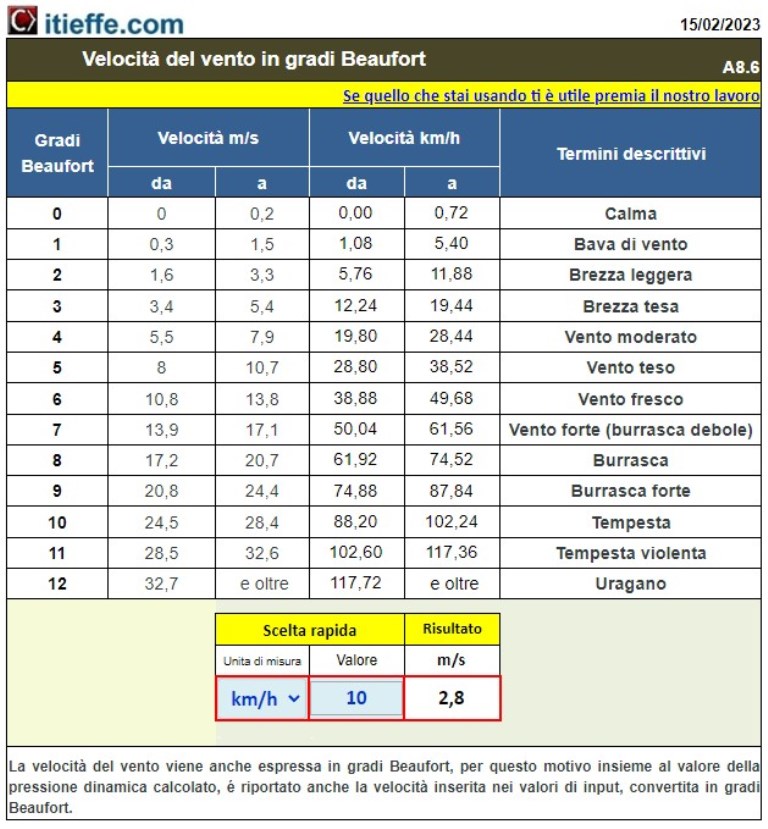Wind speed in Beaufort degrees

Wind speed in Beaufort degrees
This paper/program that Itieffe created represents a useful tool for understanding and evaluating meteorological conditions relating to wind speed. This rating scale is known as the “Beaufort Scale” and was developed by the British navigator Sir Francis Beaufort in 1805. The Beaufort scale classifies wind speed based on the effects observed on the sea surface or on land, offering an intuitive to describe and measure wind without the use of sophisticated measuring instruments. Before examining the specific content of the paper or program, it is important to provide a background to understand the context and importance of this evaluation scale.
Context of the Beaufort scale:
The Beaufort scale was developed to provide a uniform description of wind conditions, particularly during sailing activities. However, over the years, it has also been adopted in many other contexts, including aviation, terrestrial meteorology and the maritime industry. The Beaufort scale is one of the most widely used wind rating scales in the world.
Wind speed classification in Beaufort degrees:
The Beaufort scale classifies wind speed into grades numbered from 0 to 12, each corresponding to a series of observable conditions and effects. For example, a Beaufort rating of 0 represents calm winds, while a Beaufort rating of 12 represents a hurricane with winds greater than 117 km/h. Each intermediate degree indicates a gradual intensification of the wind and the effects it entails.
Importance of the Beaufort scale:
The Beaufort scale is important for several reasons:
- Universal communication: Provides a universal communication system to describe wind speed in an understandable and standardized way.
- Browsing safety: It is essential for safe navigation operations, helping navigators to make informed decisions about sea conditions.
- Meteorology: it is used in meteorology to describe wind conditions and to interpret weather forecasts.
- General context: It can be useful in various contexts, such as assessing wind-related risks for aviation, agriculture and other outdoor activities.
Contents of the paper/program:
The essay/program includes:
- A quick converter for km/hem/s and vice versa.
Conclusion
In conclusion, this paper/program offers a clear and practical guide to understanding and interpreting wind speed using this widely recognized rating scale. Its adoption helps improve communication and understanding of wind-related meteorological conditions, increasing safety and awareness in various application contexts.
Wind speed in Beaufort degrees
The wind speed is also expressed in Beaufort degrees, for this reason, together with the calculated dynamic pressure value, the speed entered in the input values, converted into Beaufort degrees, is also reported.
The Beaufort scale is an empirical measure (therefore not an exact standardized measure by convention) of the wind strength measured in 12 degrees or numbers indicated with the symbol Bft
There is also a convenient speed calculator
Wind speed in Beaufort degrees
The program below is free to use.
To access the reserved version (see below), full page and without advertising, you must be registered.
You can register now by clicking HERE
